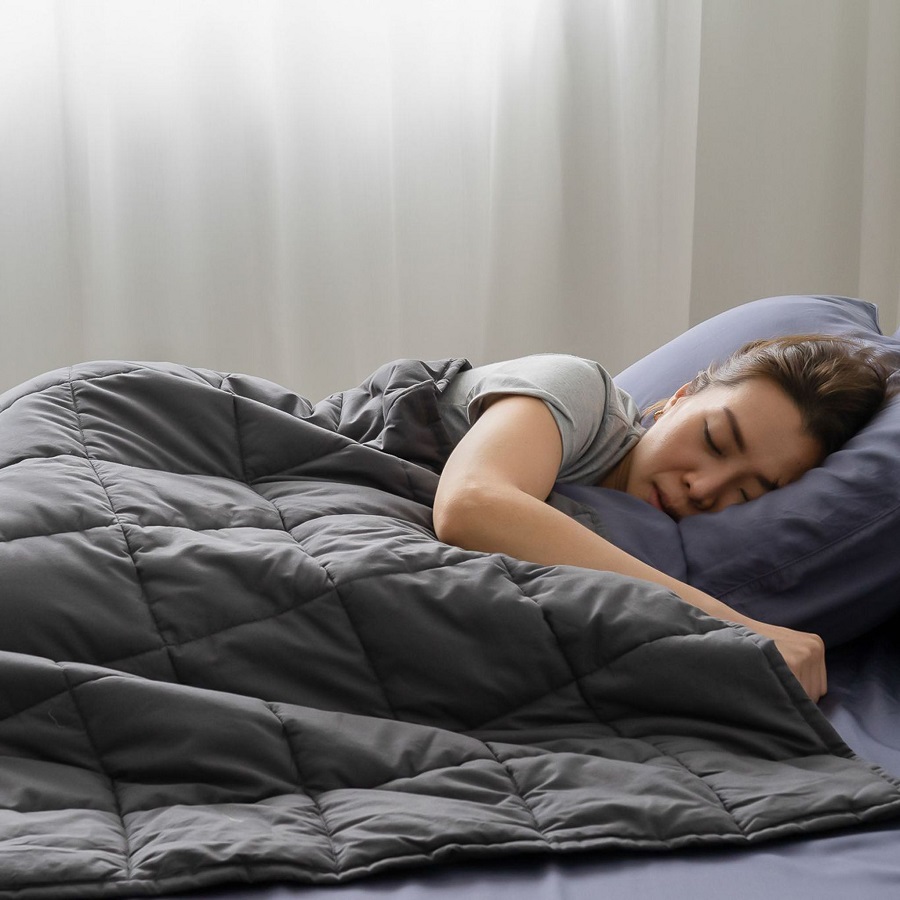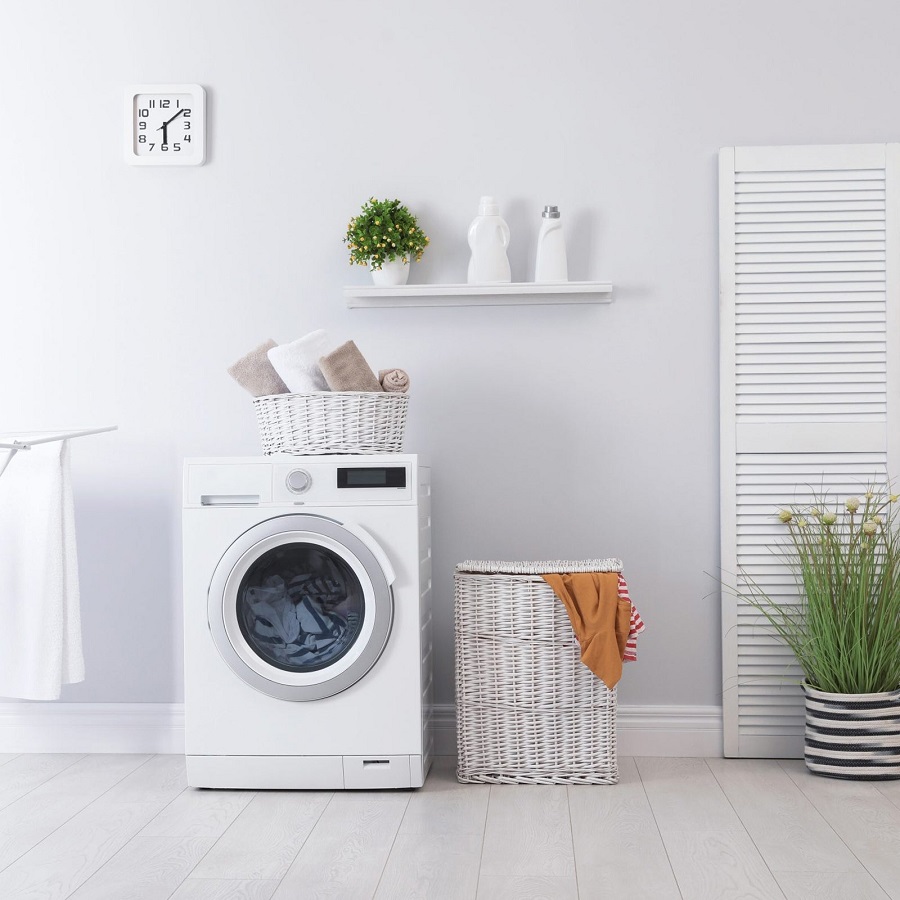The Importance of Proper Weighted Blanket Maintenance
Caring for your weighted blanket is key to its longevity and performance. Regular maintenance ensures that your blanket remains hygienic, comforting, and in top condition for extended use. Similar to standard bedding, weighted blankets absorb body oils, sweat, and dust over time. This can lead to unpleasant odors and reduced blanket efficacy.

Beyond cleanliness, proper care also impacts the therapeutic benefits weighted blankets provide. They are known to help with anxiety and promote better sleep, which may be less effective if the blanket is dirty or worn out. Hence, thorough and frequent washing is essential.
Additionally, weighted blankets often contain materials like glass beads or plastic poly pellets. Incorrect washing can damage these fillers, causing your blanket to lose its even weight distribution. Moreover, different blankets have varying care instructions depending on their fabrics and fillers.
To maintain the quality and ensure safety during washing, always check the care label. Follow recommended guidelines about washing frequency, detergent use, water temperature, and drying methods. Some blankets may need hand washing, while others are machine washable. With proper care, your weighted blanket will continue to provide comfort for years to come.
When and How to Wash Your Weighted Blanket
Knowing when and how to wash your weighted blanket is critical for its care. You should wash your blanket regularly to keep it fresh and to maintain its comforting qualities. If you notice any spots or it starts to have an odor, it’s time for washing. Always begin by checking the care label for specific instructions. If the label approves, you can usually wash your blanket in a washing machine. Use a mild detergent and set the washing machine to a gentle cycle. Remember, if your blanket weighs over 20 pounds, consider taking it to a professional laundromat to avoid damage to your home appliances. For hand washing, fill a large tub with water, add a gentle detergent, and carefully wash your blanket, avoiding excessive agitation that could harm the fillers.
When machine washing, it’s best to wash the blanket alone to prevent it from being damaged by other items. Once the washing cycle is complete, inspect your blanket. If it seems exceptionally damp, gently wring out excess water before drying. For drying, air-dry your weighted blanket on a clean, flat surface if possible; this will help preserve its shape. You can also use a dryer on a low heat setting; just make sure to distribute the weight evenly and check it periodically to prevent overheating. With the right approach, washing a weighted blanket can be simple and effective, ensuring your blanket stays clean and comfortable for longer.

Choosing the Right Detergent and Water Temperature
Choosing the correct detergent and water temperature is vital when washing a weighted blanket. For detergent, always opt for a gentle, mild formula. Harsh chemicals can damage the fabric and fillers. Look for detergents marked “free and clear” or those designed for delicate items to ensure safety.
When selecting water temperature, abide by the care tag. If absent or unclear, play it safe with cold or warm water. Hot water might shrink or warp certain materials and should generally be avoided. Cold water is effective for most weighted blankets and is less likely to cause harm.
Remember to avoid bleach and fabric softeners. These can break down materials and diminish your blanket’s comforting texture. Stick with the recommended detergent amount; too much can leave residue and too little might not clean effectively.
Water temperature does more than affect cleaning; it also impacts your weighted blanket’s life span. Warm water can activate the detergent better, but it’s not suited for all fabric types. Always check the label before deciding the water temperature.
In summary, use a mild detergent and adhere to the suggested water temperature for your weighted blanket. These steps help keep your blanket in peak condition, offering comfort and hygiene for a long time.
Machine Washing vs. Hand Washing Techniques
Choosing between machine washing and hand washing your weighted blanket can be puzzling. It often comes down to the blanket’s specific care instructions and its weight. For those that are machine washable, always use a gentle cycle with a mild detergent. This protects the fabric and the inner materials from excessive wear. However, if your blanket weighs more than 20 pounds, it’s safer to avoid your home appliances. Such heavy blankets should go to a professional laundromat equipped to handle the load.
Hand washing is a gentle alternative for weighted blankets not suited for the machine. It’s a simple process that requires a large tub, some mild detergent, and patience. Fill your tub with cool or lukewarm water and add the detergent. Submerge your blanket, gently agitate it by hand to clean, and then rinse thoroughly. This method is especially useful for blankets with delicate fabrics or fillers that a machine might damage.
Before choosing your cleaning method, always check the weighted blanket’s care label. This will guide you well in preserving your comforting sleep aid. Whether you opt for machine washing or hand washing, do it with care to maintain the blanket’s quality and longevity.
 Handling Different Weighted Blanket Materials
Handling Different Weighted Blanket Materials
Handling different materials of weighted blankets appropriately is crucial for their care. Here’s a guide to help you deal with various fabrics:
- Fleece Weighted Blankets: For fleece, warm water is best for washing. Soak in a mild detergent before the wash cycle to loosen dirt. Avoid fabric softeners and opt for an extra rinse. Air drying is preferable to prevent pilling.
- Flannel Weighted Blankets: Flannel should be washed in warm or cool water. Spin dry on medium, and don’t over-dry to avoid fiber damage. Carefully remove it from the dryer promptly.
- Minky Weighted Blankets: Minky blanket care is simple. Wash with a non-chlorine detergent on a gentle setting. Brush lightly to remove stains. Avoid hot water and high dryer temperatures.
- Cotton Weighted Blankets: Launder cotton blankets alone using a cold cycle. Mix in a little vinegar with detergent to preserve colors. Hang or lay flat to dry evenly.
- Rayon-Linen Blend Weighted Blankets: If possible, hand these over to a dry cleaner. If machine washing, use a cold cycle and mild bleach for stains, avoiding shrinkage.
- Silk Weighted Blankets: Silk is delicate and prone to damage. Stick to dry cleaning to maintain its integrity. Washing carelessly can lead to shrinkage and color loss.
Considering these tips will help ensure that your washing methods are aligned with the care needs of your weighted blanket’s material, leading to enhanced longevity and sustained comfort.
Drying Your Weighted Blankets: Best Practices
After washing a weighted blanket, drying it properly is key. This ensures it stays in good shape and continues to provide comfort. Here’s how to dry your blanket with care:
Use Low Heat in the Dryer
If using a dryer, set it to a low heat. This prevents damage from high temperatures. High heat can harm the fabric and fillers.
Air Dry When Possible
Air drying is gentle and risk-free for most blankets. Lay the blanket flat in a well-ventilated area. Make sure it’s evenly spread to dry properly.
Avoid Hanging Knit or Heavy Blankets
Hanging can stretch out knit fabrics. It also might strain seams on heavy blankets. Always dry these flat or tumble dry on low.
Check the Care Tag
Some blankets need special drying care. Always look at the label before drying your blanket. It guides to the right drying method.
By following these best practices, you can dry your weighted blanket properly. This maintains its quality and extends its comfort for longer.
 Spot Cleaning Tips for Weighted Blankets
Spot Cleaning Tips for Weighted Blankets
Even with regular washing, your weighted blanket might get some spots or stains between washes. Spot cleaning can help address these without needing a full wash. Here are some tips:
- Act Quickly: When a spill happens, act fast. The sooner you treat a stain, the easier it is to remove.
- Use the Right Cleaner: Choose a mild soap or a specialized stain remover that is gentle on fabrics. Avoid harsh chemicals that could damage the materials.
- Gentle Application: Dab the stain with a cloth soaked in soapy water. Don’t rub hard, as it can push the stain deeper into the fabric.
- Rinse Out Soap: After treating the spot, rinse the area with a cloth dipped in clean water. Make sure all soap is out to avoid leaving a residue.
- Air Dry: Let the spot air dry completely. Avoid using direct heat or putting it in the dryer as this may set the stain.
- Check Label: Always look at the care tag before spot cleaning to ensure you’re using safe methods for the fabric.
Spot cleaning is a simple but effective way to prolong the life of your weighted blanket and keep it fresh. Used in combination with regular washing techniques, these tips will help maintain your blanket’s quality for years.
 Professional Cleaning and Laundromat Considerations
Professional Cleaning and Laundromat Considerations
When washing a weighted blanket, professional cleaning is an option worth considering. This is especially true for blankets over 20 pounds or for delicate materials like silk or rayon-linen blends. Professional dry cleaners have the expertise and equipment to handle these without causing damage. They understand how to deal with various fillers that may be affected by water, such as sand or food-based fillings.
Using a laundromat’s large capacity washers and dryers may be necessary if your home machines are not up to the task. Blankets that are too heavy can strain or break home appliances. Laundromats offer commercial-grade machines built to handle larger, heavier loads, ensuring a thorough clean without the risk of damaging your equipment.
At the laundromat, you can use a front-loading washer, which is generally safer for weighted blankets as it lacks the agitator that top-loaders have. Agitators can cause tearing or stretching in the blanket. Plus, laundromats typically have bigger dryers that can accommodate heavy blankets, allowing for better air circulation and more even drying.
Remember, before you visit a professional cleaner or laundromat, check your blanket’s care tag. Some blankets specify ‘spot clean only’ or ‘dry clean only’. Others may have specific instructions about water temperature or cycle type. By following the care tag, and when needed, opting for professional services, you’ll maintain your weighted blanket’s shape, texture, and therapeutic qualities.
